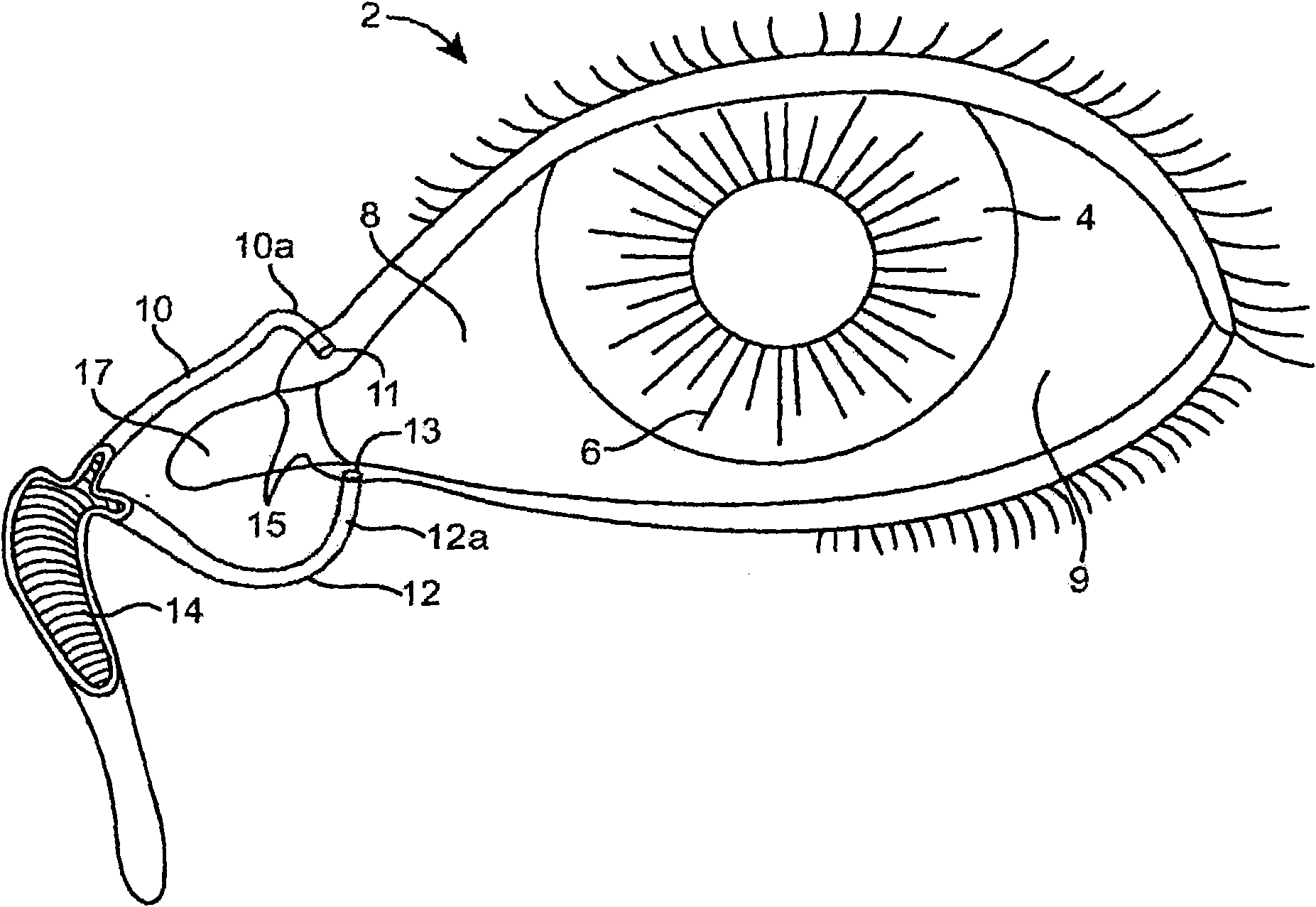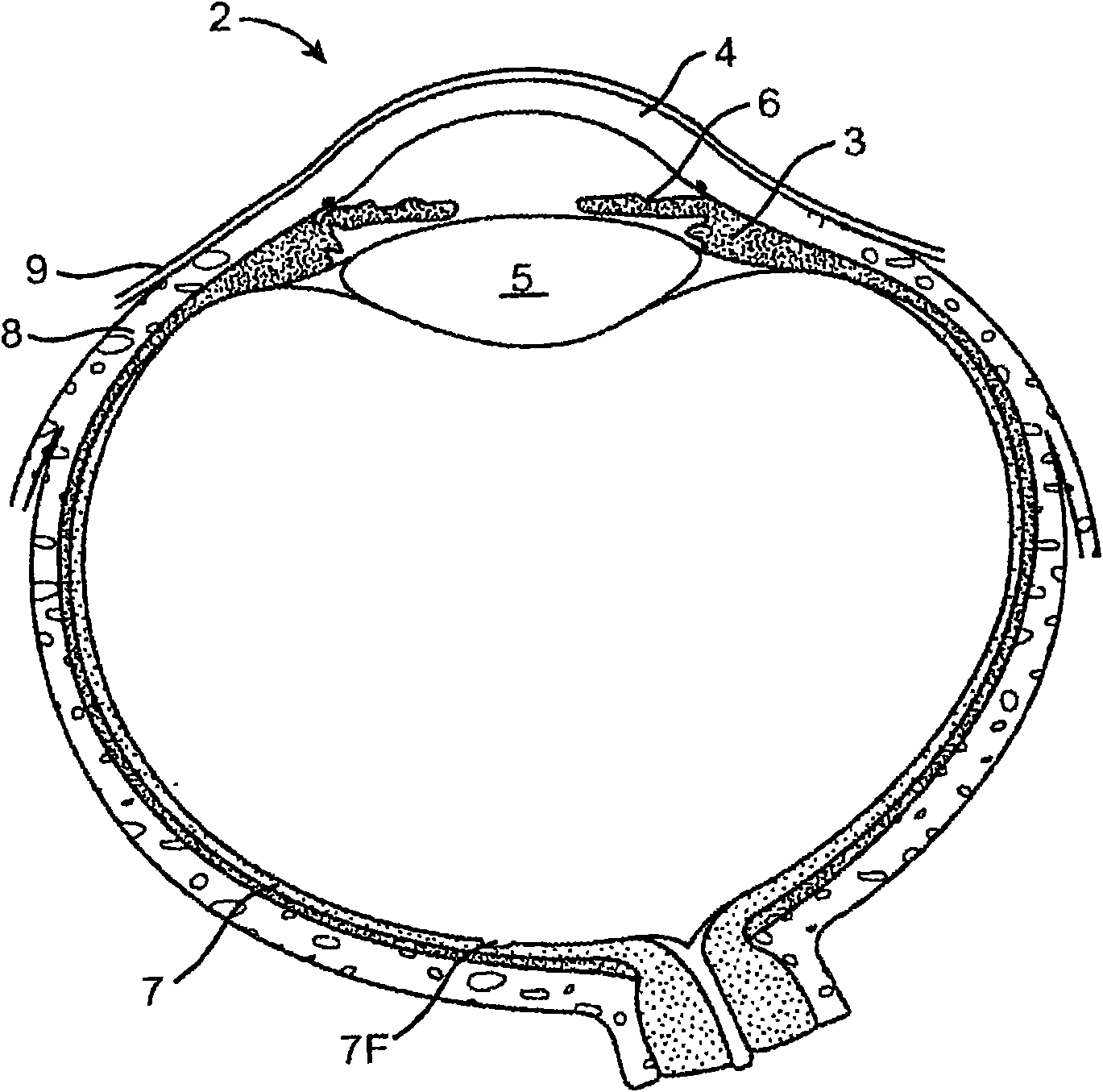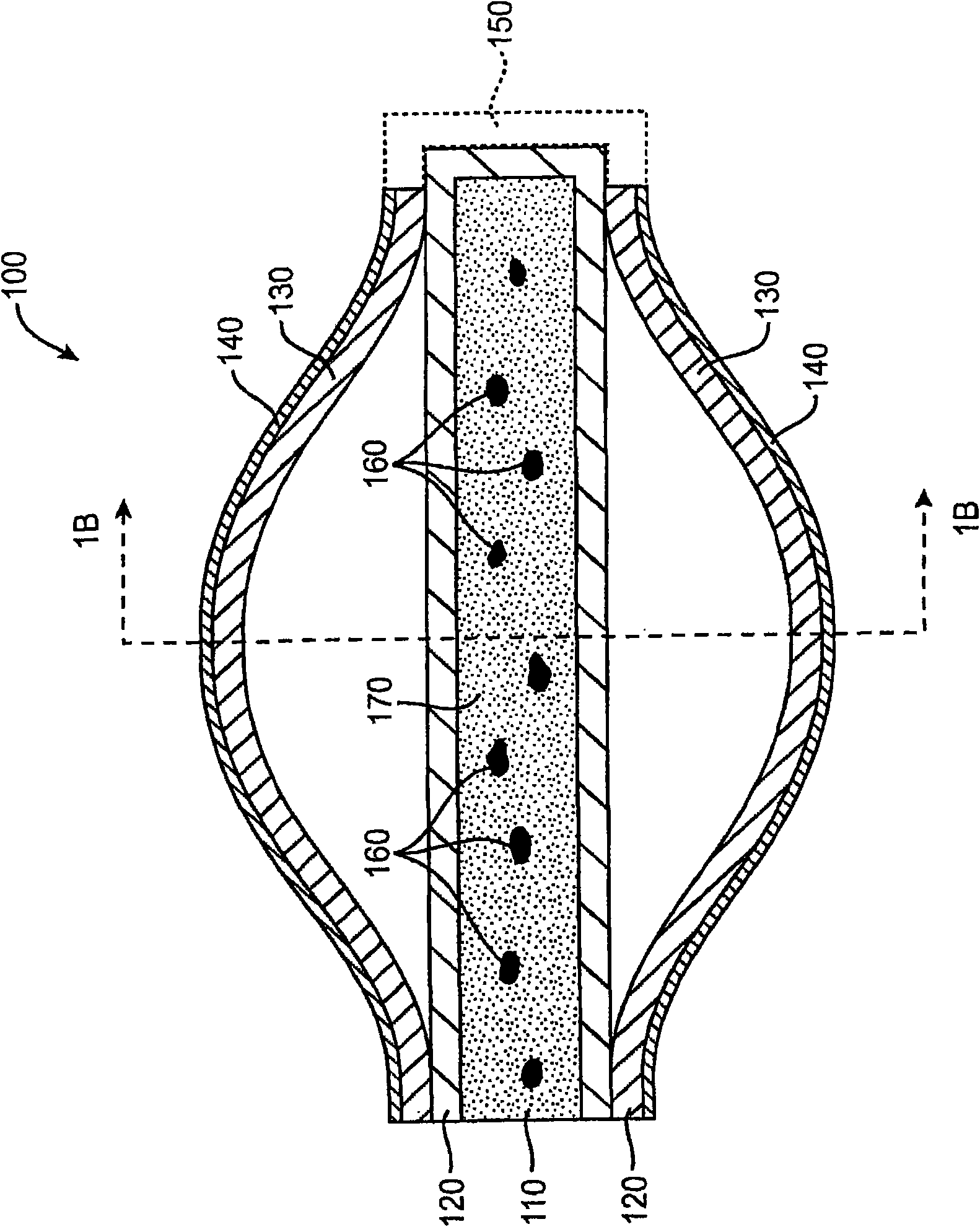Drug delivery implants for inhibition of optical defects
A technology of implants and drugs, applied in the direction of eye implants, drug combinations, sensory diseases, etc., can solve problems such as difficulty in use, side effects, and disease development
- Summary
- Abstract
- Description
- Claims
- Application Information
AI Technical Summary
Problems solved by technology
Method used
Image
Examples
Embodiment Construction
[0052] Picture 1-1 and 1-2 It is a schematic diagram of the anatomical structure of the implant suitable for the eye according to the embodiment of the present invention. Eye 2 includes cornea 4 and iris 6 . The sclera 8 surrounds the cornea 4 and the iris 6 and is white. The conjunctival layer 9 is very transparent and wraps around the sclera 8 . The lens 5 is located in the eye. The retina 7 is located at the back of the eye 2 and is normally sensitive to light. The retina includes the macula 7F, which provides the sharpest vision and color vision. Cornea 4 and lens 5 can refract light to make it image on macula 7F and retina 7 . The refractive power of the cornea 4 and lens 5 contributes to the imaging on the macula 7F and retina 7 . The relative positions of the cornea 4, lens 5 and macula 7F are also important for the quality of the image. For example, if the axis of the eye 2 from the cornea 4 to the retina 7F is elongated, the eye 2 may be myopic. Also, when a...
PUM
 Login to View More
Login to View More Abstract
Description
Claims
Application Information
 Login to View More
Login to View More - R&D
- Intellectual Property
- Life Sciences
- Materials
- Tech Scout
- Unparalleled Data Quality
- Higher Quality Content
- 60% Fewer Hallucinations
Browse by: Latest US Patents, China's latest patents, Technical Efficacy Thesaurus, Application Domain, Technology Topic, Popular Technical Reports.
© 2025 PatSnap. All rights reserved.Legal|Privacy policy|Modern Slavery Act Transparency Statement|Sitemap|About US| Contact US: help@patsnap.com



